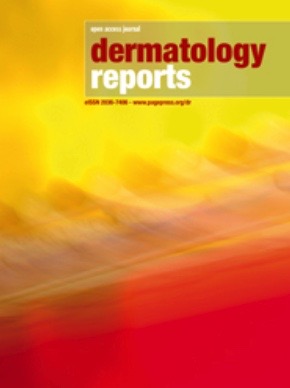Amazon Scorpion Venom Shows Potential in Breast Cancer Treatment
Introduction
Preliminary research presented at the FAPESP Week France health conference highlights the potential of venom from the Amazon rainforest scorpion Brotheas amazonicus as a novel treatment for breast cancer. This innovative study aligns with several Sustainable Development Goals (SDGs), particularly SDG 3 (Good Health and Well-being) and SDG 15 (Life on Land), emphasizing the importance of biodiversity in advancing medical research.
Context and Challenges
Global health challenges are intensifying due to an aging population, increased exposure to pollutants, and stressed ecosystems. These factors contribute to rising incidences of cancer, dementia, and other diseases. In response, researchers are exploring unconventional sources for new treatments, including natural compounds found in scorpion venom.
Research Methodology: Heterologous Expression
To accelerate discovery, Brazilian researchers have employed heterologous expression techniques, inserting genes of interest into model organisms to produce and test proteins derived from scorpion venom for medical applications.
- Identification of bioactive molecules in Brotheas amazonicus venom.
- Insertion of genes encoding these molecules into yeast species Komagataella pastoris as biological factories.
- Production and isolation of proteins for laboratory testing.
- Assessment of the proteins’ effects on breast cancer cells.
Key Findings
- The molecule BamazScplp1, identified in the Amazonian scorpion venom, exhibits properties similar to chemotherapy drugs by inducing necrosis (cell death) in breast cancer cells, causing them to rupture.
- Additional molecules promoting angiogenesis (formation of new blood vessels) were discovered from snake venom and bovine blood components, produced via heterologous expression, with potential applications in regenerative medicine.
Implications for Sustainable Development Goals
- SDG 3: Good Health and Well-being – The development of novel cancer treatments from natural sources contributes to improved health outcomes and innovative medical solutions.
- SDG 9: Industry, Innovation, and Infrastructure – The use of heterologous expression technology exemplifies scientific innovation and scalable production methods for bioactive compounds.
- SDG 15: Life on Land – Conservation of biodiversity, particularly in the Amazon rainforest, is critical to preserving natural resources that may hold keys to future medical breakthroughs.
Conclusion and Future Directions
While the research is in its early stages, the use of heterologous expression to produce and study bioactive molecules from Amazonian scorpion venom presents a promising avenue for cancer treatment development. This approach not only advances medical science but also underscores the vital link between environmental conservation and human health.
Continued efforts to protect ecosystems and promote sustainable research practices are essential to harness nature’s potential in addressing global health challenges, supporting the achievement of the Sustainable Development Goals.
1. Which SDGs are addressed or connected to the issues highlighted in the article?
- SDG 3: Good Health and Well-being
- The article discusses research on scorpion venom potentially treating breast cancer, directly relating to improving health outcomes and combating diseases.
- SDG 9: Industry, Innovation and Infrastructure
- The use of heterologous expression and biotechnology to develop new medical treatments highlights innovation and scientific research infrastructure.
- SDG 15: Life on Land
- The article emphasizes the importance of preserving ecosystems like the Amazon rainforest to discover new treatments, linking to biodiversity conservation.
2. What specific targets under those SDGs can be identified based on the article’s content?
- SDG 3 Targets:
- Target 3.4: Reduce premature mortality from non-communicable diseases (including cancer) through prevention and treatment.
- Target 3.b: Support research and development of vaccines and medicines for communicable and non-communicable diseases.
- SDG 9 Targets:
- Target 9.5: Enhance scientific research, upgrade technological capabilities of industrial sectors, and encourage innovation.
- SDG 15 Targets:
- Target 15.1: Ensure conservation, restoration, and sustainable use of terrestrial and inland freshwater ecosystems and their services.
- Target 15.5: Take urgent action to reduce degradation of natural habitats and halt biodiversity loss.
3. Are there any indicators mentioned or implied in the article that can be used to measure progress towards the identified targets?
- For SDG 3:
- Indicator 3.4.1: Mortality rate attributed to cardiovascular disease, cancer, diabetes or chronic respiratory disease.
- Indicator 3.b.1: Proportion of the population with access to affordable medicines and vaccines on a sustainable basis.
- The article implies progress could be measured by the development and clinical testing of new cancer treatments derived from natural sources like scorpion venom.
- For SDG 9:
- Indicator 9.5.1: Research and development expenditure as a proportion of GDP.
- Indicator 9.5.2: Number of researchers per million inhabitants.
- The article implies measuring progress through the advancement of biotechnological methods such as heterologous expression and the number of innovations in medical research.
- For SDG 15:
- Indicator 15.1.1: Forest area as a proportion of total land area.
- Indicator 15.5.1: Red List Index to monitor species extinction risk.
- The article implies the importance of monitoring ecosystem health and biodiversity to ensure the preservation of natural habitats that could harbor medicinal resources.
4. Table of SDGs, Targets and Indicators
| SDGs | Targets | Indicators |
|---|---|---|
| SDG 3: Good Health and Well-being |
|
|
| SDG 9: Industry, Innovation and Infrastructure |
|
|
| SDG 15: Life on Land |
|
|
Source: sciencealert.com







